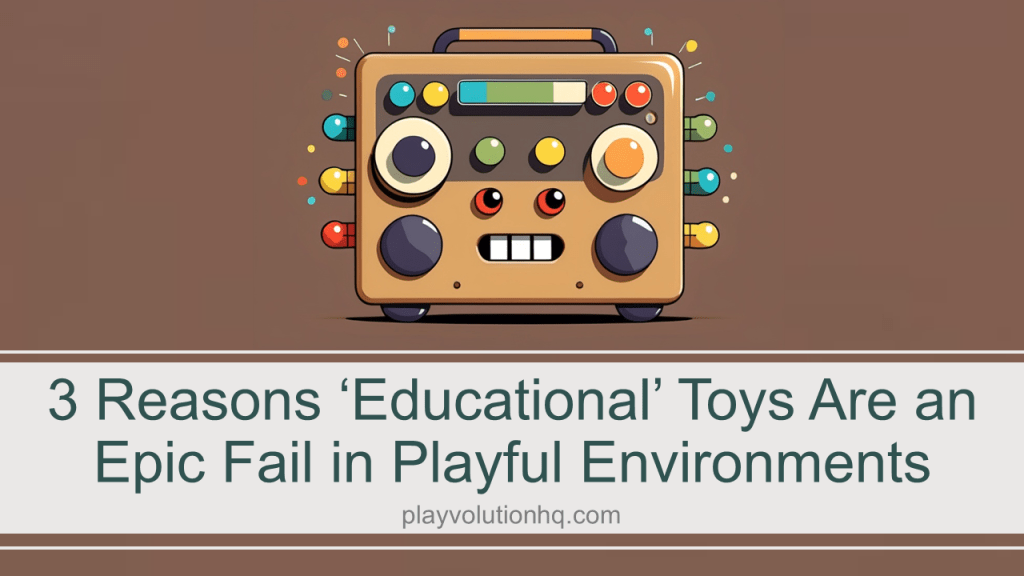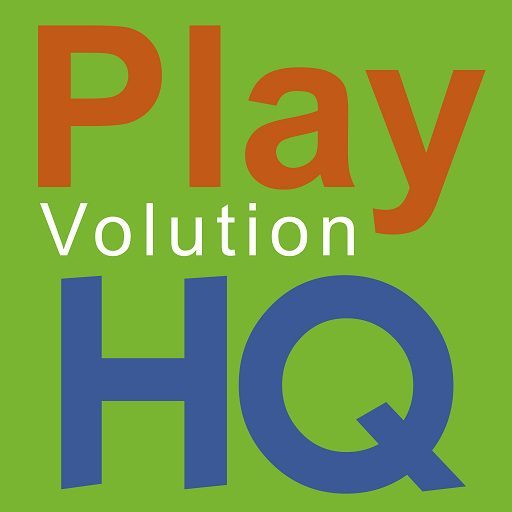
Table of Contents
It’s essential to debunk the common misconception that play environments are enhanced by ‘educational’ toys. The opposite is true. While such toys may seem like valuable tools for learning and development, they fall short in three critical ways: their limited functionality, their outcome-focused design, and their poor return on investment.
Fixed Functionality Limits Creativity
Educational toys often have rigid, predefined functions. A typical example might be a toy with buttons to press, dials to spin, or shapes to match. While engaging for a moment, these toys quickly lose their appeal because their use is limited to the specific tasks they are designed for. Once a child completes these tasks, there’s little room for imagination or exploration.
Sure, there may be some repetition of the dial spinning and button pushing, but boredom quickly sets in. A genuinely enriching play environment, by contrast, thrives on open-ended materials—items that can be used in countless ways, allowing children to explore and create without boundaries. That is why kids are often more interested in the cardboard box these gadgets came in than in the ‘educational’ toys themselves.

Focus on Outcome Over Process
One of the most significant drawbacks of educational toys is their focus on achieving specific outcomes, such as learning letters, colors, or numbers. When children are only asked to recite or repeat information, they miss out on the deeper context that fosters genuine learning.
In a play-based environment, the emphasis is on the journey—experimenting, problem-solving, and making meaningful real-life connections. Through play, children discover practical uses for numbers or language in everyday scenarios, making the learning more relevant and memorable. By engaging their senses, emotions, and curiosity, they can explore how numbers work in real-life situations—like measuring ingredients in a pretend kitchen or organizing objects by size or weight. This process-oriented approach encourages critical thinking, creativity, and a more profound understanding of concepts that outcome-driven ‘educational’ toys fail to provide. Real, lasting learning emerges when children actively discover rather than passively consume information.

Poor Investment of Resources
From a financial perspective, ‘educational’ toys are a poor use of resources. A single ‘educational’ toy might cost $20, $50, or even $150 and offer little educational value. In contrast, for the same cost, early learning programs could invest in more paint, paper, and other consumable materials or expand their collection of loose parts like sticks, stones, cardboard boxes, and fabric scraps. These materials offer endless possibilities for play and creativity, are process-focused, and provide a far greater return on investment.

Wrap-Up
Parents and educators often choose ‘educational’ toys with the best intentions, believing they provide tools to enhance children’s learning. However, play environments are not improved by ‘educational’ toys. Instead, play-focused learning spaces thrive with materials that encourage creativity, exploration, and process-focused play. We can create environments that genuinely support children’s growth and development by shifting our focus from pre-packaged learning to open-ended opportunities.
Contribute content to Playvolution HQ
Brought to you by Explorations Early Learning
Browse Trainings

Author
Jeff Johnson is an early learning trainer, podcaster, and author who founded Explorations Early Learning, Playvolution HQ, and Play Haven.
In-Person And Online Training
Learn how to book an in-person or online training for your organization on these early learning topics.
Support The Site
I participate in the Amazon Services LLC Associates Program, an affiliate advertising program designed to provide a means for me to earn fees
by linking to Amazon.com and affiliate sites.
Thanks To Our Patrons
This post was made possible by patrons like these, who generously fund our work:
Supporters
Lissadell Greene Stephanie Goloway Jennifer Stark
Lagina Kozak Michelle Hankins
Marie Messinger Tamara L. Lakin
Fans
Jen Flemming Lizz Nolasco Cynthia J Bays
Susan Warner Kelly Sigalove Shawn Wolf
Vittoria Jimerson Codee Gilbert Wendy Tedford
Monica Morrell Pam Soloman Melissa Franklin
Teresa Watson Erika Felt Autumn Peele
Melissa Taylor Jahmeela Robinson Stacie Manning
Amber Maurina Terra Calamari Anne Jackson
Lagina Kozak Samantha Yeager-Cheevers
Elizebeth McCoy Sammy Cousens Ellen Cogan

Leave a Reply